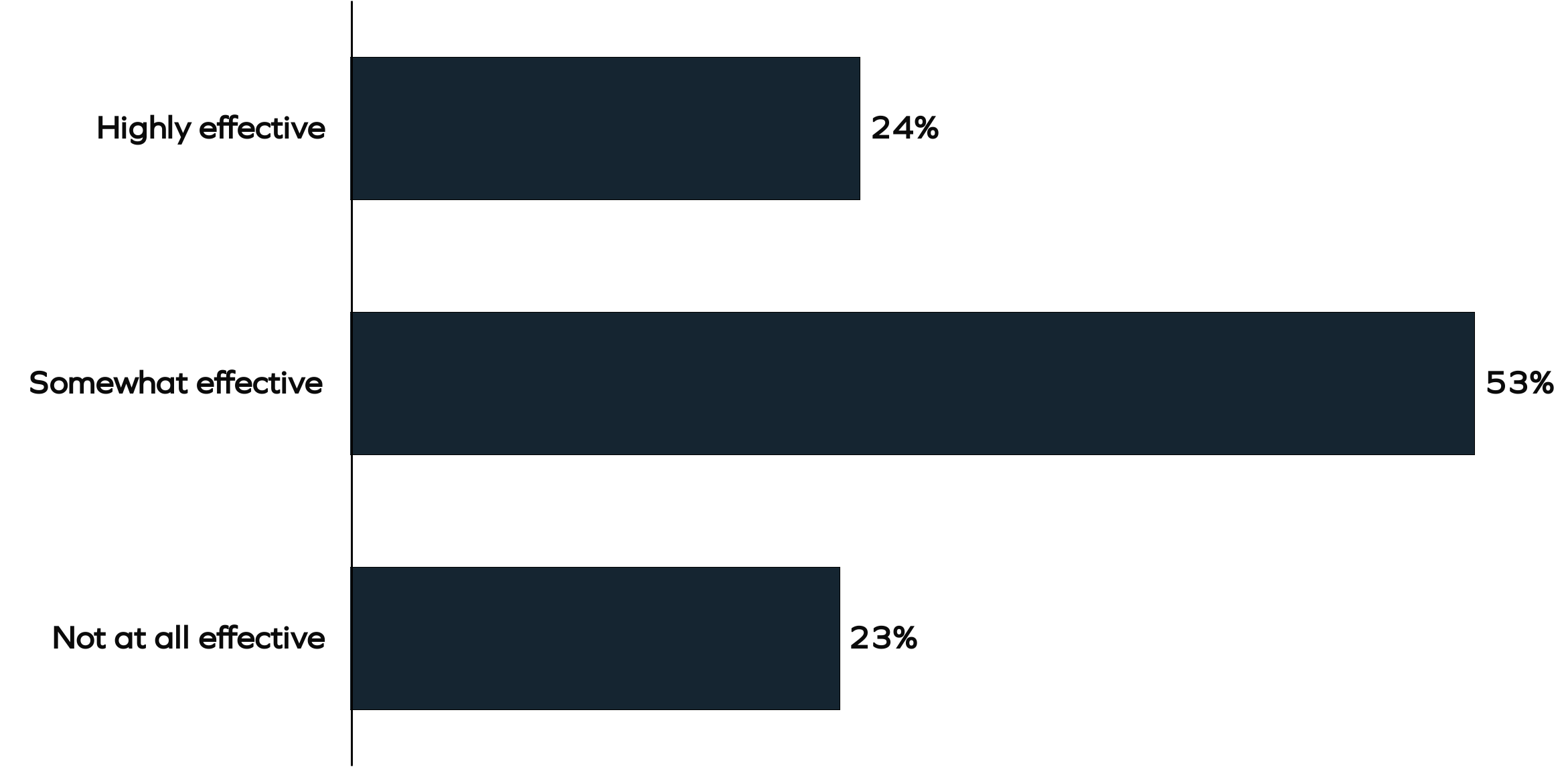Whether it’s the end of the month, quarter, or year, sales organizations are always asking the same questions:
- How can we increase our win rate?
- How can we increase our average deal size?
- How can we reduce the average duration of our sales cycle?
The simple answer to these three questions might be to spend more time selling and less time in internal meetings. However, an ounce of planning is worth a pound of ineffective activity. Moreover, the status quo is failing. Though Deal Reviews are conceptually powerful, most Deal Reviews aren’t delivering a sufficient impact. In a recent LinkedIn poll with 525 responses, only one-quarter of sales professionals rated their Deal Reviews as Highly Effective.

Deal Reviews benefit the entire sales organization. For account executives, it’s an opportunity to talk through obstacles, enlist support, accelerate deals, and identify a path to close - leading to improved quota attainment and more money in their pocket. For the sales manager, reviewing deals in depth with your team and asking the right questions will lead to increased forecast accuracy and team attainment. For sales leaders, effective Deal Reviews establish a process and framework to leverage as their team’s scale, improve overall pipeline health, and promote Sales Linearity.
Insight Partners has developed a Deal Review Template (download below!) that any organization can use. While centered around MEDDICC, this template can be used regardless of your qualification process and can fit within your organization’s specific sales methodology. This will help teams review each opportunity in-depth, quickly highlighting areas to address in a repeatable manner.
Logistics
Before diving into the elements of the template, let’s review several logistical recommendations to ensure the time you spend in Deal Reviews is as effective as possible.
- Frequency: Weekly
- Forum: 1:1 between a first line sales manager and individual rep
- Duration: 20-30 mins per deal (longer for strategic enterprise deals)
- Deal Selection: By manager (focus on strategic and at-risk deals)
- Rules of engagement:
- Create a safe space to ensure reps are comfortable saying, “I don’t know but will find out by next week.”
- Start each Deal Review by reviewing actions from the prior session to ensure commitments do not fall through the cracks
Next, we’ll go through each section of the Deal Review template to provide more context and explain the why behind some of the questions.
Elements of the Deal Review Template
Overview - This section is split into two areas- Account and Opportunity. Account Overview aims to better understand what the company does and our current relationship with them. The Opportunity Overview focuses on reviewing all relevant information specific to the current opportunity, including the amount, current stage, next step, and where the rep may need support. Think of this as an introduction for the rep to quickly bring the manager up to speed. Ideally, this step is a pre-read sent over before the meeting.
Impact – The MEDDICC framework starts to come into play through (M)etrics and (I)dentified Pain. Metrics focuses on the ROI the customer expects from our product and what they may need to purchase. Identified Pain narrows in on the problem the customer is experiencing and how our solution can solve it. This section ensures that reps can articulate the economic benefit created by solving buyers’ needs. Be as specific as you can in this section on both the benefit and costs of not finding a solution to the buyer’s problem.
People & Partners - Focus on the (E)conomic Buyer and (C)hampion here. If your sales motion utilizes Partners, review their roles, impact, and engagement in every Deal Review. A best practice in this section is to go beyond verifying that the rep has identified each person - look to uncover ways to help each person on the (often informal) buying committee achieve their objectives.
Decision - Arguably the most crucial area to cover in a Deal Review, this section includes (D)ecision Criteria and (D)ecision Process. Evaluating Decision Criteria in a Deal Review should verify that the rep understands how the customer evaluates the opportunity. Critically, the rep should influence the Decision Criteria in favor of your solution. While Decision Criteria are evaluation factors, the Decision Process is a project plan with actions, owners, status, and timelines.
Competition- Identify competition early in the sales process. Even If you think you are winning, press further into who the competition is (which is often internal) and ensure you’ve established clear points of differentiation against known competitors.
Conclusion
To put it simply, the best Deal Reviews ask the best questions, challenge sales reps, and lead to improved sales results. The goal of the meeting shouldn’t be to review “What’s happening?” but rather, “What should happen next?”
The downloadable template below can be used as-is or tuned to your organization’s sales process. Remember, the template goes hand-in-glove with a weekly Deal Review routine. For more sophisticated processes, adjust the focus and depth of each Deal Review based on exit criteria at each stage of each opportunity.
In summary, Deal Reviews are a fundamental part of sales execution that will increase forecast accuracy, put more money in your teams’ pockets, and establish a foundation that can be built upon as you scale. The ability to call and hit a target has massive ramifications for the future success of a sales team. Whether you’re just building your sales organization or preparing for an IPO, Deal Reviews can help everyone avoid end-of-quarter surprises and uncomfortable board sessions.
Download Deal Review Template
Centered around MEDDICC, this downloadable Deal Review Template can be used by any organization, regardless of your qualification process and can fit within your organization’s specific sales methodology. Use this to help teams review each opportunity in-depth and quickly highlight areas to address in a repeatable manner.












